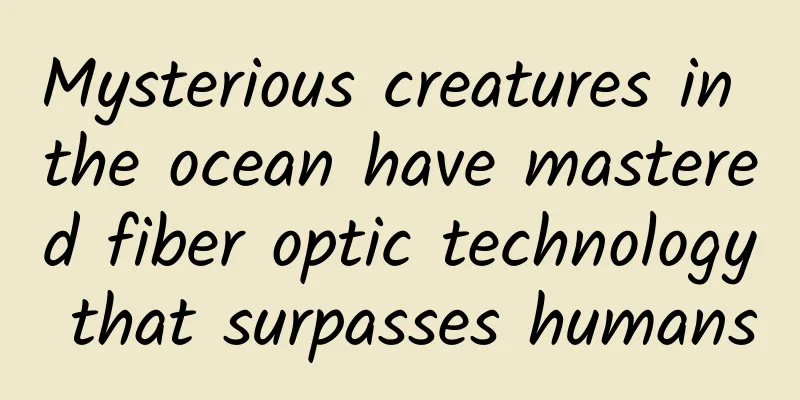Why don't woodpeckers get concussions? You think they have shock absorbers, but they're actually hammers

|
Woodpeckers peck at extremely high speeds and frequencies, so why don't they get concussions? This seemingly normal behavior of animals is not so easy for humans to explain. About 50 years ago, scientists discovered the "shock-absorbing structure" in the woodpecker's brain, which was once thought to be the reason why it does not get concussions. But when people really get to the bottom of it, they find that this is not the case. Written by | A string Woodpecker As we all know, woodpeckers are called "woodpeckers" because they often peck at wood (the key to the problem is to find the key problem). When we were young, our parents or teachers would tell us two things about woodpeckers: First, woodpeckers can protect trees by pecking, and they are "good doctors" of trees and good friends of humans; second, the reason why woodpeckers can peck tirelessly is because they have a shock-absorbing structure in their heads. But from a scientific point of view, these two "knowledge points" are wrong. First of all, woodpeckers do not peck to protect trees or humans, but to find food, build nests, declare territory, and attract mates. In other words, woodpeckers do it for their own survival. It's just that woodpeckers eat insects that harm trees, which does play an indirect protective role for trees; but they occasionally make the hole too big (some species of woodpeckers use trees as granaries), which is definitely a "medical accident." A woodpecker is pecking irreversibly at a tree. Image source: Internet Humans still need to respect the laws of nature and not anthropomorphize the behavior of woodpeckers. The second piece of knowledge is more scientific. The speed and frequency of woodpeckers pecking wood is so fast that humans with naked eyes can only see afterimages. When a woodpecker's beak hits a tree, the speed can reach 20km/h, the frequency can reach 30 times per second, and the deceleration can reach an astonishing 400g (g is the acceleration due to gravity). In the 1970s, when Professor Philip May of the University of California, Los Angeles was conducting scientific research on woodpeckers, he tried to use an ordinary camera with a frame rate of 24 frames per second to track the woodpecker's pecking behavior. However, because the speed was too fast, the specific details could not be captured, so he finally had to switch to a high-speed camera with a frame rate of 40 frames per second. For most animals, the brain is an important object of protection, so why don't such frequent and high-speed collisions cause woodpeckers to suffer concussions? Is it because there are shock-absorbing structures in the woodpecker's brain? Woodpeckers don't have migraines In 1976, Professor Philip May and his colleagues published an article in The Lancet: They used anatomical methods to discover that the connection between the woodpecker's beak and skull is a spongy porous bone, from which they speculated that it is this spongy porous bone that plays a shock-absorbing role. At the end of the article, they suggested that some thin, flexible and well-shaped materials should be added to the hard outer shell of the helmet to provide better protection for the wearer. Many modern helmet designs adopt Professor May's suggestion, protecting the heads of thousands of people who have been involved in traffic accidents. Woodpecker skull. The green part is the spongy bone. Image source: Reference [2] In 2002, Professor Ivan R. Schwab of the University of California, Davis, used CT scanning technology to confirm Professor May's anatomical findings: the CT image clearly showed a section of porous spongy bone between the woodpecker's intracranial scleral ring and beak (as shown in the green part in the picture above). In addition, Schwab's research team used high-speed cameras to find that 1 millisecond before the bird's beak pecked the tree trunk, the transparent nictitating membrane (eyelid) in the woodpecker's eye would close in time, wrapping the eyeball tightly to prevent them from jumping out of the eye socket. The woodpecker's eyelids acted as a "seat belt." The 2006 Ig Nobel Prize was awarded to two scholars, Ivan.R.Schwab and Philip May, in recognition of their contributions to the exploration of why woodpeckers do not have headaches. There was a small episode during the awarding process. When Professor Schwab received the award notification from the organizing committee, he modestly stated that he had not achieved any substantial work, but had only "brought Professor May's work more than 20 years ago back to the public eye." In the end, the selection committee and Professor Schwab reached an agreement to award the Ig Nobel Prize to both Professor Ivan R.Schwab and Professor Philip May, who died in 1986. This problem seems to have been solved well, but I always feel that something is missing. In fact, as long as you review it a little, you will know the missing point of the logical argument. Both the anatomical results and the CT scan results can only prove that there is indeed a structure in the woodpecker's head, but they cannot prove that there is a causal relationship between this structure and the lack of concussion due to huge deceleration. In other words, so far, we have not been able to directly prove that the spongy bones in the woodpecker's skull have completed shock absorption, allowing the woodpecker to withstand high-speed and frequent collisions. It seems that the two professors did not dig deep enough. Professor Ivan Schwab attended the 2006 Ig Nobel Prize ceremony wearing a hat shaped like a woodpecker's beak. 丨Image source: Internet The truth about shock absorption In fact, Professor May is skeptical of the idea of a "shock absorber" itself - absorbing shock would make the woodpecker worse at finding food or digging a nest (pecking less means more effort); it would be like putting a pillow in the middle of a nail while you hammer it. From an evolutionary perspective, this function would not have evolved. In 2022, Professor Sam Van Wassenbergh of the University of Antwerp in Belgium read Professor May's point of view, and he suddenly realized the problem mentioned above: Although a large number of previous studies have shown the existence of shock-absorbing structures in the woodpecker's skull, there has not been a direct study to show that the shock-absorbing structure can really achieve shock absorption. To find out whether the spongy bone can achieve shock absorption, it is not complicated at all. All you need to do is measure the deceleration value of the front part of the spongy bone near the tip of the beak and the deceleration value of the part near the brain, and compare the two values. Having said that, some high technology is still needed to complete accurate measurements. In car airbag tests, engineers usually use high-speed cameras to film the car collision process, and then use slow motion playback to analyze the details and finally evaluate the safety factor of the car. In order to complete the precise measurement of deceleration, scientists use the same technology (Professor Schwab's team also used high-speed cameras when studying the eye protection mechanism of woodpeckers). An international team led by Professor Wassenbergh used high-speed cameras to record the entire process of woodpeckers of three species: the black woodpecker (Dryocopus martius), the great spotted woodpecker (Dendrocopos major) and the North American black woodpecker (Dryocopus pilatus). In order to avoid individual differences, two of each woodpecker were selected. In order to film them, the team visited four zoos in Europe and a laboratory in Canada. Photographing the woodpecker pecking wood. Image source: Erica J. Ortlieb/University of British Columbia The researchers selected three tracking points along the skull, two on the beak and one on the eye; for the North American black woodpecker, a point covering the skull skin was added as a fourth tracking point (see the figure below). They analyzed the movement trajectories of these markers and calculated the specific values of deceleration. The location of the marking point on the woodpecker's body. Image source: Reference [1] Fig2(a) Of course, in order to avoid fluctuations in single data, scientists calculated the deceleration of woodpeckers 100 times at these marked points and took the average value. The deceleration value diagram of the marked point. Image source: Reference [1] If the shock absorption theory is true, then the deceleration value should be greater near the beak (yellow), and the deceleration value should be smaller near the brain (green). The results clearly show that: compared with the markers on the beak, there is no significant reduction in deceleration at the markers close to the skull. Scientists also carefully analyzed the correlation coefficient between the deceleration of the eye and the deceleration of the middle part of the beak, as shown in the figure below. The closer the correlation coefficient is to 0, the better the shock absorption effect is; the closer it is to 1, the less shock absorption effect there is. The nearly 45° tilt angle in the figure shows that the front and back of the woodpecker's spongy bones do not absorb shock. The woodpecker's head does not behave like a shock absorber, but like a solid rigid body. In layman's terms, it is a hammer. Correlation analysis between woodpecker eye deceleration and beak mid-deceleration | Image source: Reference [2] The mystery of invulnerability Since the woodpecker's head does not have a shock-absorbing function, how do they protect their brain from damage? Data show that when pecking, the woodpecker's brain can easily decelerate to an astonishing 400g, and as long as the deceleration exceeds 135g, it can cause a concussion in the human brain (if the deceleration reaches 400g, the brain is probably shaken evenly). In 2006, Professor Lorna Gibson of the Massachusetts Institute of Technology pointed out that the difference between humans and birds mainly comes from the difference in mass between the woodpecker's brain and the human brain. Lorna Gibson attributed the reasons why birds can tolerate such a large deceleration to three reasons: 1. Birds have small brains, which reduces the force on the brain under the same deceleration conditions. The force is proportional not only to the deceleration, but also to the size of the brain. 2. The impact lasts for a very short time, which increases the tolerance of birds; (It's like you immediately retract your hand when you are scalded by boiling water. This may be tolerable for humans, but if you are poured with boiling water for a few minutes, you will be taken to the hospital.) 3. The length of the brain in the direction of force in the skull. The length of the brain of birds in the direction of force is only about one-seventh of that of humans. From this perspective alone, the deceleration threshold that birds can withstand is equal to 7×135g, which is about 1000g. This value is much greater than the peak deceleration of a woodpecker when pecking. Evolution has given the woodpecker species sufficient safety buffs - if a woodpecker accidentally pecks at something much harder than wood, such as a steel plate (some woodpeckers do this), its physiological structure can also ensure its safety and prevent it from fainting immediately. The law that the force on the brain is proportional to the length of the direction of the force just explains why there is no giant woodpecker that can peck deeper holes than existing woodpecker species. We can use the method of contradiction to prove it: if such a giant woodpecker that can peck deeper holes evolves, as the distance of the force direction increases, the woodpecker will need to bear greater intracranial pressure under the same acceleration. When the pressure reaches a certain level, the woodpecker will die from concussion. Of course, from another perspective, humans have evolved such a large brain, becoming the "intelligent person" of this planet, but at the same time, the threshold of deceleration that humans can withstand has been greatly reduced, making them more susceptible to concussions and making them more "fragile". This is also the subtlety of nature - when a creature has a certain advantageous trait, it often comes with some insurmountable shortcomings. Conclusion If we count from Professor May's article in The Lancet in 1976, the research and exploration of the mystery of woodpeckers' "no headaches" spans nearly half a century. After the continuous efforts of several generations of scientists, people have finally gotten rid of the domination of the "shock absorption theory" and established a more scientific and three-dimensional understanding of the "secret" of woodpeckers. But for the designers of safety helmets, they may need some new inspiration, after all, the woodpecker's head structure is not a more shock-proof model. Why do humans waste time on such a seemingly small problem? Perhaps it is just like what Professor Schwab said, "We can't all win Nobel prizes, but we can look at the world around us and ask questions." Main references [1] Sam Van Wassenbergh and Maja Mielke, Why woodpeckers don't get concussions, Physics Today 77 (1), 54–55 (2024). [2] Sam. Van Wassenbergh et al., Woodpeckers minimize cranial absorption of shocks, Curr. Biol. 32, 3189 (2022). [3] Ivan R Schwab Cure for a headache Br. J. Ophthalmol. 86, 843; 2002. [4] PR May et al. Woodpeckers and head injury, Lancet(7957), 454–455. [5] LJ Gibson, Woodpecker pecking: How woodpeckers avoid brain injury J. Zool. 270, 462 (2006). This article is supported by the Science Popularization China Starry Sky Project Produced by: China Association for Science and Technology Department of Science Popularization Producer: China Science and Technology Press Co., Ltd., Beijing Zhongke Xinghe Culture Media Co., Ltd. Special Tips 1. Go to the "Featured Column" at the bottom of the menu of the "Fanpu" WeChat public account to read a series of popular science articles on different topics. 2. Fanpu provides a function to search articles by month. Follow the official account and reply with the four-digit year + month, such as "1903", to get the article index for March 2019, and so on. Copyright statement: Personal forwarding is welcome. Any form of media or organization is not allowed to reprint or excerpt without authorization. For reprint authorization, please contact the backstage of the "Fanpu" WeChat public account. |
Recommend
How can Mini Programs effectively engage in fission marketing?
In this issue, I will share with you the efficien...
Earth forest, a fleeting landscape
Earth forest is a kind of semi-loose and semi-con...
World Mosquito Day丨Do mosquitoes also have to "take turns"? Let's take a look at the mosquito work schedule
Produced by: Science Popularization China Author:...
Most people have never tasted the true flavor of cooking oils because they are originally smelly.
Key Points ★ The edible oil we eat does not stink...
Will HTC's attempt to pioneer the use of physical buttons in mobile phones be completely eliminated?
My experience with touch screen phones for so many...
Staying up late = unhealthy? Not getting enough sleep for 8 hours is bad for your health? It's not that simple
Workers usually stay up late to work overtime, an...
How to monitor website conversion rate?
The conversion ability of a website mainly refers...
What to do if iPhone message reception is delayed? In fact, changing the time zone will eliminate the delay, which is very practical
Have you ever encountered this situation when usi...
AI makes mobile phone tasks run automatically! The latest research from Chinese universities simplifies the operation of mobile devices
AI liberates the hands of carbon-based organisms ...
WeChat Pay launches limited edition red envelope cover for the Year of the Tiger, with "Tiger Bean Girl" sending blessings
On January 22, there are less than 10 days until ...
Japan's high-quality magnesium battery has made a major breakthrough: cheap and not explosive
At present, the biggest bottleneck restricting the...
Deng Shao: Analysis of the overall situation and new business forms of the OTT industry in 2015
In 2015, OTT continued to move in the same direct...
When will wearable devices become truly popular?
If you often pay attention to the trends in the f...
How to do a good job in community operation, just read this article
With the continuous acceleration of the developme...
The longest-lived bubble on the ground! It can last for nearly half an hour without bursting
Produced by: Science Popularization China Author:...









